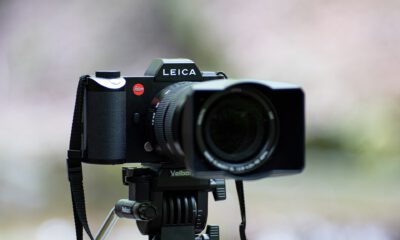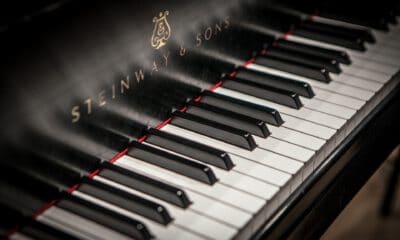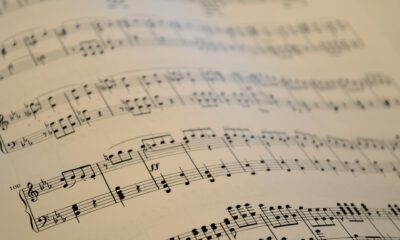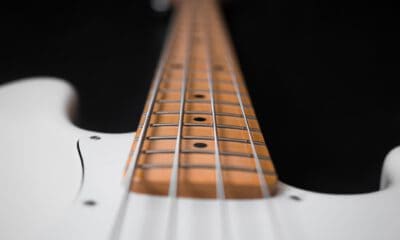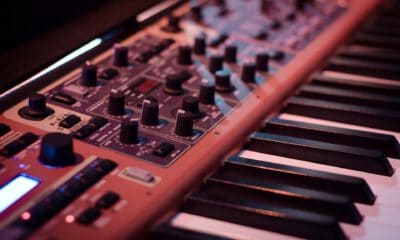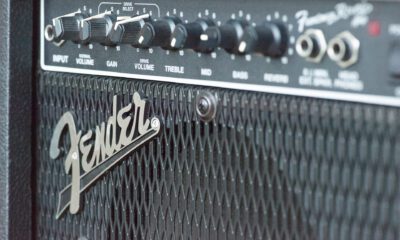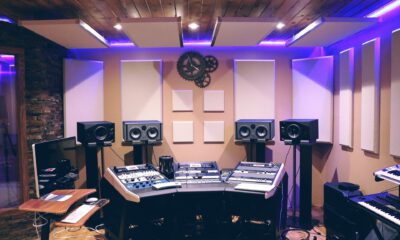Home Recording
Can You Use Normal Speakers As Studio Monitors? The Simple Answer

When you start producing music, you very quickly come across the term “studio monitor”.
Even if you are in a (reasonably) well-equipped studio, studio monitors catch your eye.
At the same time, the question arises whether and for what purpose you need these studio monitors at all. Or, whether normal loudspeakers are not completely sufficient. This is exactly the question we will now answer.
Can regular speakers be used as studio monitors?
Basically, you can use regular speakers as studio monitors. At the same time, it should be noted that real studio monitors reproduce the sound as accurately as possible, while regular speakers should provide the best possible sound experience. To get the most accurate result possible, you should definitely use studio monitors.
Of course, this is just the short answer. If you want to learn why and when studio monitors (and regular speakers) are the right choice for you, you’ve come to the right place.
Studio monitors vs. speakers
But first, let’s talk about the differences between studio monitors and speakers in general.
As mentioned, studio monitors are designed to reproduce details in the music as accurately as possible, thus changing the sound as little as possible (preferably not at all).
At the same time, however, normal loudspeakers have the goal of providing the listener with the best possible experience. Music is more of a “lifestyle product” in this respect. Listening to music should be fun.
Of course, there are various differences between the two types of speakers in the presets themselves.
The technology behind everyday speakers
Of course, there are different types of everyday speakers. We will take a look at 3 different types of typical speakers below.
The home theater and hi-fi system:
If you look at most home theater speakers, you will see that they are mostly built from the same components:
The vast majority of home theater speakers consist of either 2, 3 or 5 “normal” speakers, plus a subwoofer.
If you compare the size of the individual speakers, you will quickly notice that most subwoofers are much larger than the normal speakers.
The reason for this is pretty obvious: when we watch movies, for example, the bass creates excitement. When we listen to music, the bass in particular provides a rich sound image.
And that’s exactly what home theater speakers are about: they want to create a richer sound, for example through the use of subwoofers, and thus provide a generally better experience.
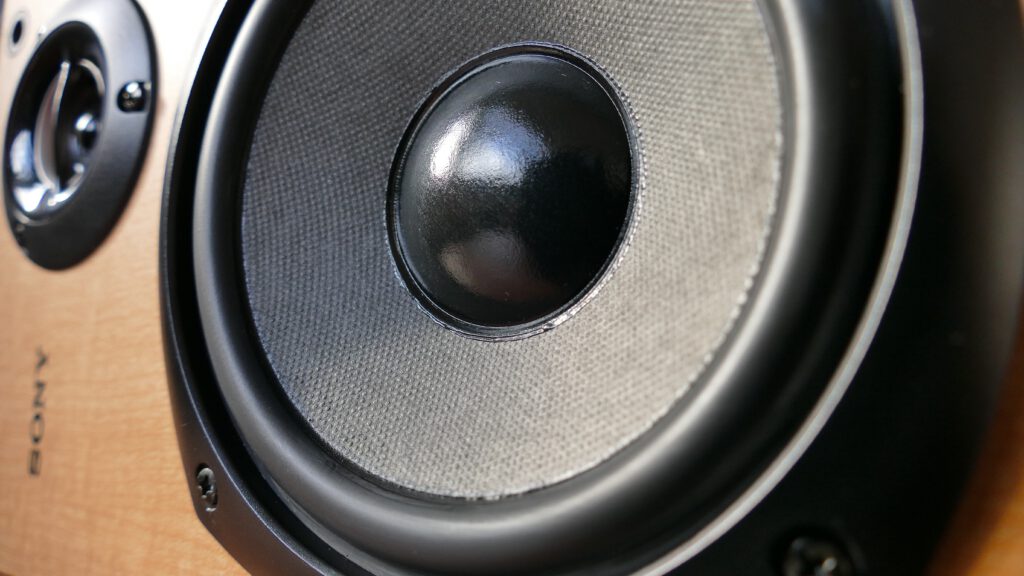
Are home theater speakers suitable as studio monitors?
As we have found, home theater speakers often distort the sound image by being very bass-heavy.
The production of our music is all about being able to reproduce the sound as unadulterated and as accurately as possible.
Therefore, you should not use home theater systems as studio monitors.
PA Speaker
This type of speaker is often used for large concerts in front of many people. There they have the task to create the best possible experience for all guests.
You might already have an idea of where this is going: PA speakers also change the sound.
While the relationship between the individual frequencies (bass, mids, and treble) is usually balanced from a distribution standpoint alone (PA speakers are usually divided into 3 different sections, an internal subwoofer that produces the lows, a speaker for the mids, and one for the highs), in most cases certain frequency ranges are filtered or amplified.
For example, depending on the brand, series and design, PA speakers will have the bass boosted and the treble filtered out a bit.

Are PA speakers suitable as studio monitors?
You might already guess the answer: PA speaker systems are not really suitable as studio monitors either, since they (by default) change the sound.
Small (Bluetooth) speakers
What is meant by small speakers? Quite simply, we’re talking primarily about portable (and in most cases, inexpensive) speakers.
Due to their size, they (especially cheaper speakers) do not bring as much sound volume.
Therefore, especially with inexpensive speakers, all frequencies are made artificially louder to thus artificially simulate a fuller sound.
Here, too, the sound is changed. And, as you already know, we just don’t want that for music production.
That’s why even smaller (Bluetooth) speakers are not so good as a replacement for studio monitors.
Now we’ve taken a look at the most common competitors to studio monitors. To give you an idea of what exactly studio monitors do differently and what you should (and shouldn’t) use them for, we’ll now take a look at the main features of studio monitors:

What are studio monitors?
As you might imagine, studio monitors have exactly one goal: to reproduce a sound that is as pristine as possible, and that preferably deviates as little as possible (in the best case, not at all) from the recording being played back.
You could say: studio monitors should sound boring.
And they do. If you ever have the opportunity to listen to a studio monitor and a normal loudspeaker right next to each other, you will notice exactly that. It’s not really an experience to listen to the sound of studio monitors, everything sounds very, very flat.
There are no special features, neither in the bass, nor in the higher frequencies. That’s why the vast majority of people would always prefer normal speakers compared to studio monitors.

Tip: NEVER buy studio monitors for your home theater or other entertainment.
A good friend of mine actually did that. Based purely on the motto “Something that professional musicians use every day must be the best there is”, he went to a music store and bought a total of 2 studio monitors for his home.
The result: a bad, boring sound without facets. And this, although the purchase price also suggests the best of the best.
Already a few weeks after the purchase, the studio monitors were replaced again by a HiFi system, therefore the tip for you: If you want to be entertained, buy normal speakers!
After we have looked at what you should not buy studio monitors in any case, the question now arises:
What are the advantages of studio monitors?
1: Extremely realistic sound. No normal loudspeaker can give you such a realistic sound that is as close to the original as studio monitors can.
2: Extremely detailed sound. Since all frequencies are reproduced as in the original, you can hear much more detail and edit your recordings accordingly to bring out the details even more.
3: Extremely “pleasant” sound: Of course the sound is boring, but at the same time it is designed to let you edit your recordings for hours at a stretch. You may have noticed with some speakers that after a while the sound gets on your nerves and you can’t hear it anymore. This is because the frequencies of normal speakers are often artificially turned up or down. This is not the case with studio monitors, of course.
Now that we’ve covered the most essential benefits of studio monitors, let’s look at a few of the most important questions:
Frequently Asked Questions About Studio Monitors
What size should my studio monitors be:
This depends on the size of your room you’re recording in. If you’re in a small room, you should buy small speakers.
The reason is that if your speakers have way too much volume for your room, the sound will just become a drone.
That doesn’t help your sound, it’s a disadvantage. So you should really only buy speakers that are large enough to fill your room, but not oversized.
If you have different speakers for different frequency ranges, you should make sure that the monitor for the lows is the largest and the monitor for the high frequencies is the smallest. The mid frequencies in this case should also be reproduced by a mid-sized speaker.
What is the best way to set up my studio monitors?
Of course, this varies from brand to brand and from model to model. However, to give you a general idea, you can watch this video:
How many monitors should I have?
You should have at least 2 speakers, so you can place one on your left and one on your right.
Of course, you can theoretically produce with one, but you’ll have the problem that (if you don’t have it perfectly centered) you’ll hear more in one ear than the other.
The difference is not great, but it is still crucial.
Also, 2 speakers allow you to hear everything in stereo. (Of course, there are no upper limits).
Do I need stands for my studio monitors?
Yes, it is definitely recommended.
If your studio monitors are placed on a table or on the floor, for example, the sound will also be consumed.
That’s why it makes sense to invest a little in stands for your studio monitors once in a while.
Conclusion:
Now you have a detailed insight into the world of studio monitors (and the comparison to normal speakers).
As mentioned, you should always ask yourself what you want to use your speakers for.
If you want to produce music, and accuracy of reproduction is important to you, sooner or later you should invest in decent studio monitors. You’ll definitely get more detail and polish out of your music.
However, if your goal is to listen to music for entertainment, you should rather go for regular speakers. Studio monitors are more accurate and much closer to the actual recording, but at the same time will completely take away from your experience.
Studio monitors do not sound exciting, but sober and boring.
Generally speaking, it can be said that this is both their greatest strength and their greatest weakness.
While they are a curse for anyone who wants to listen to music simply to relax, they are a true blessing for anyone who produces music themselves.








